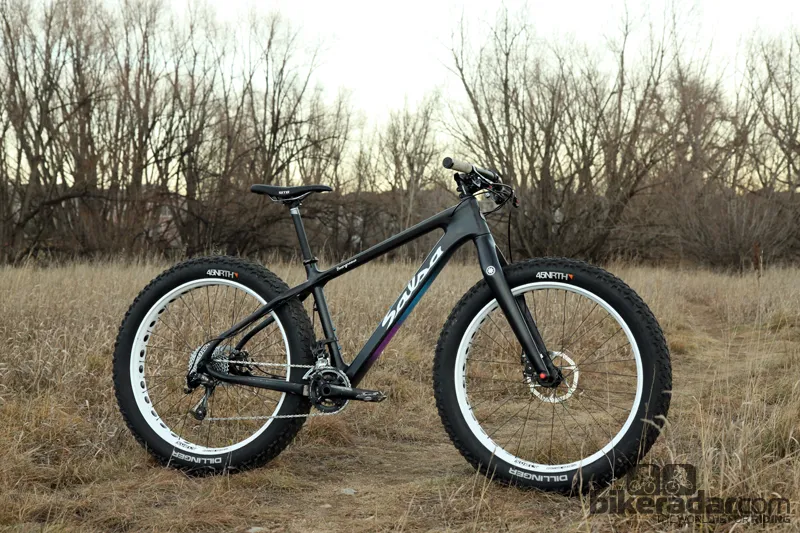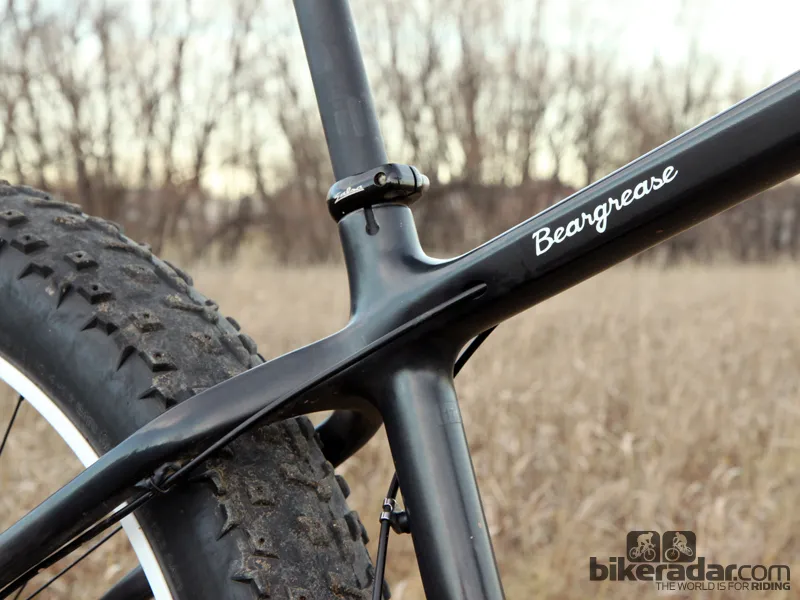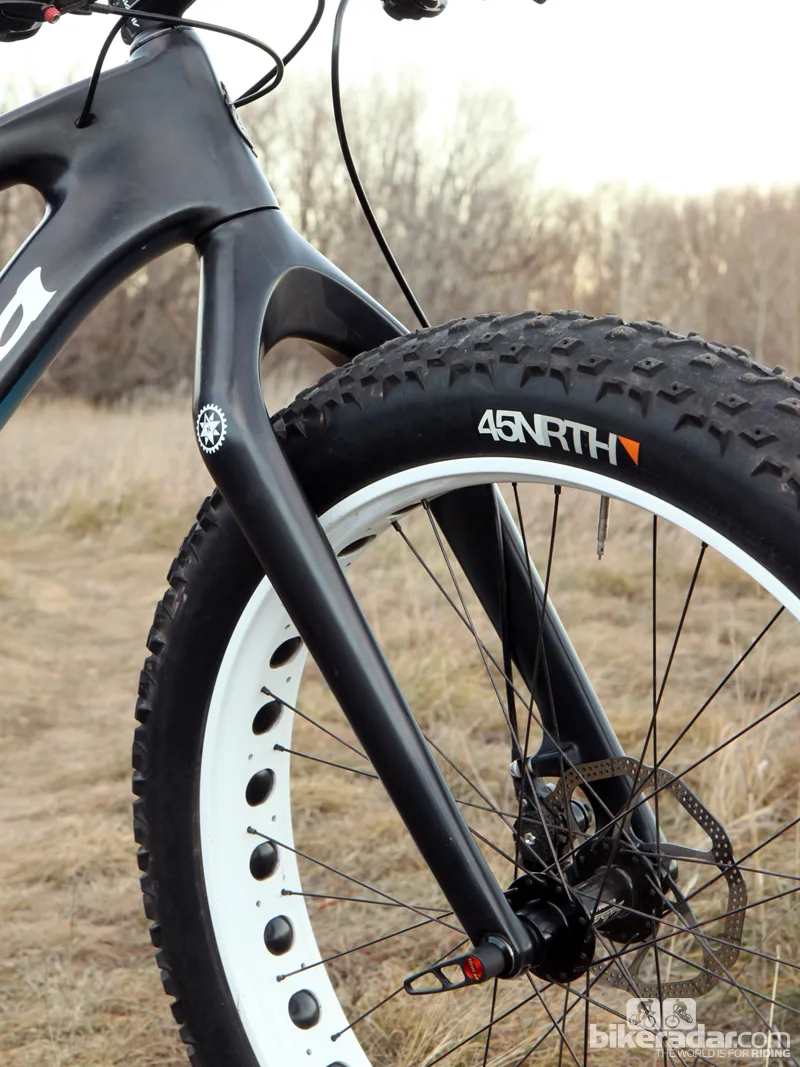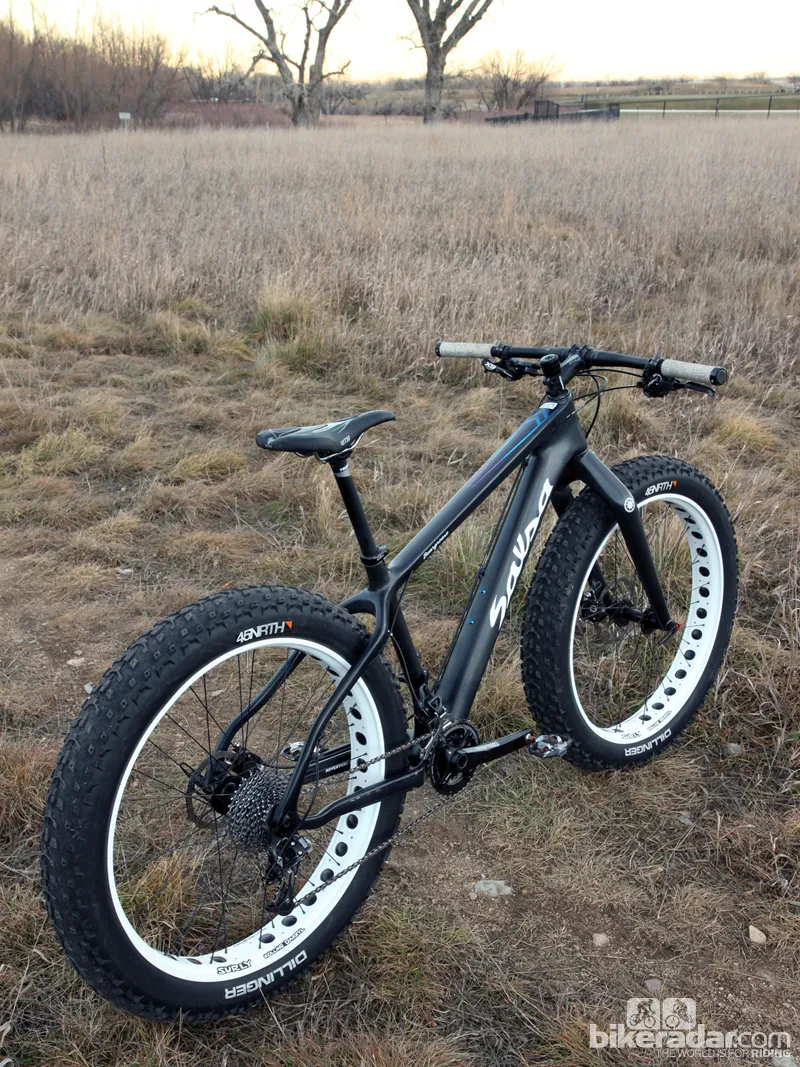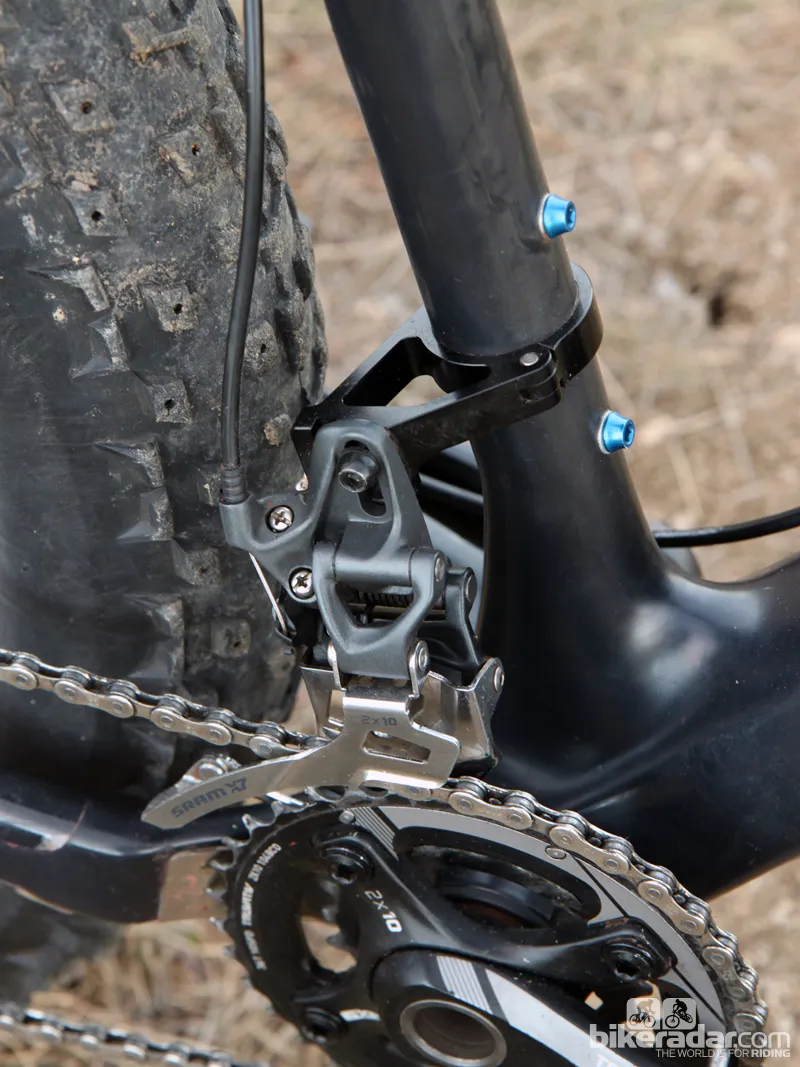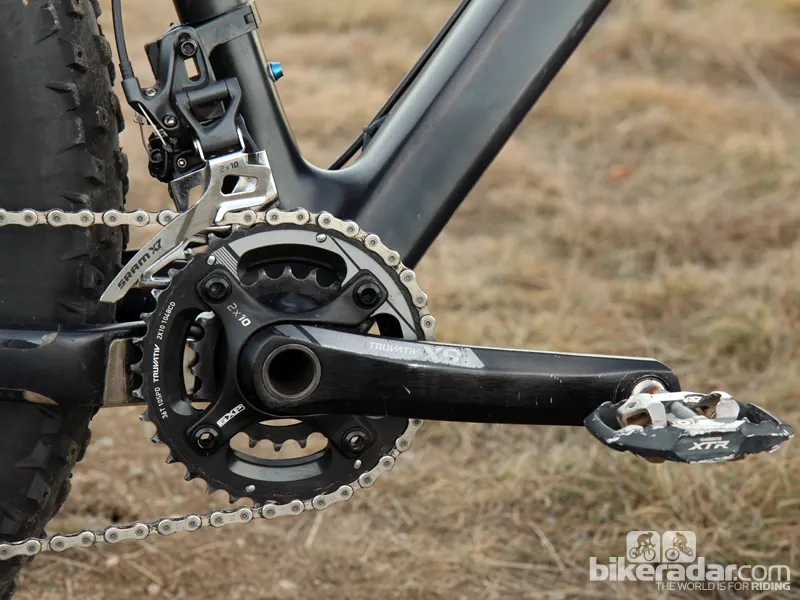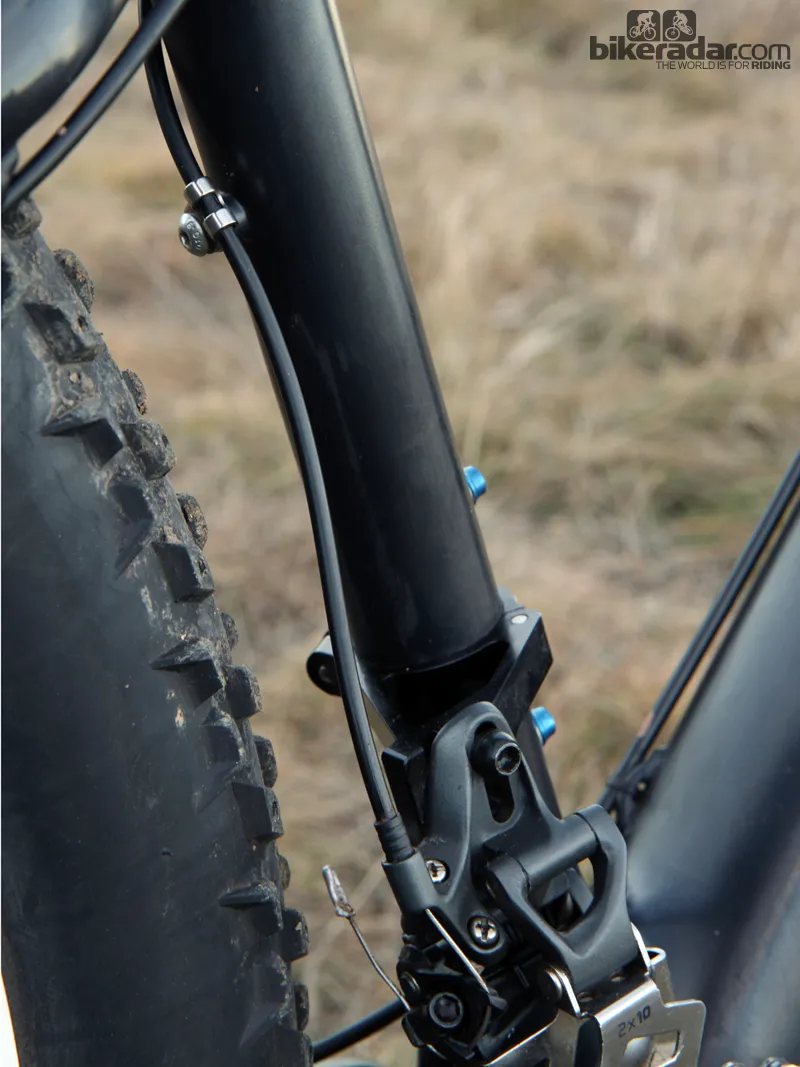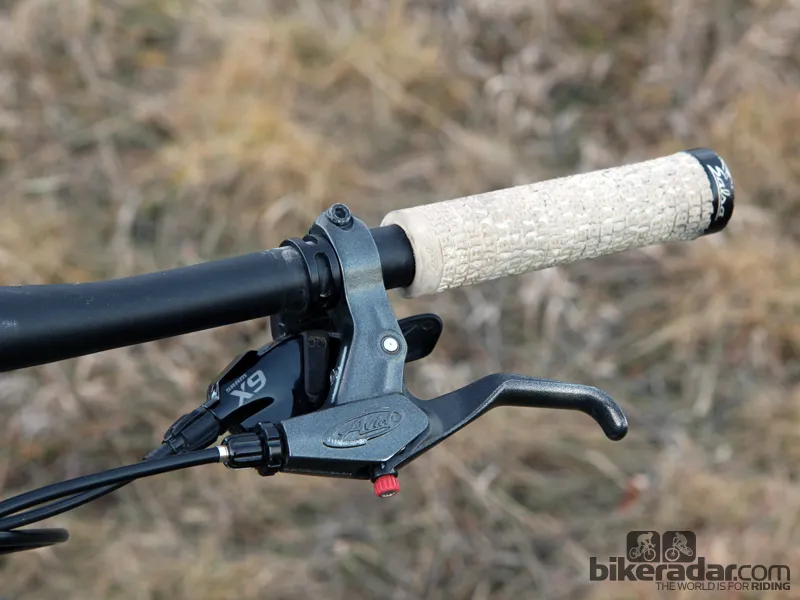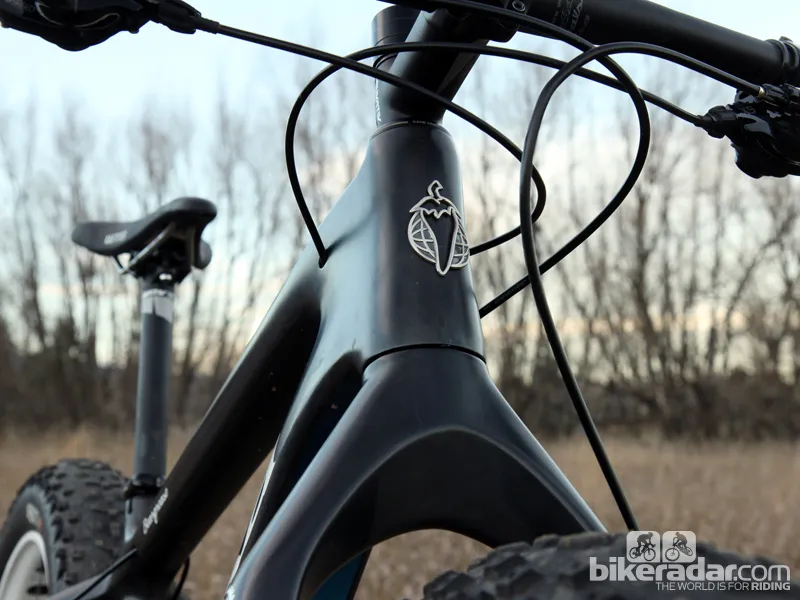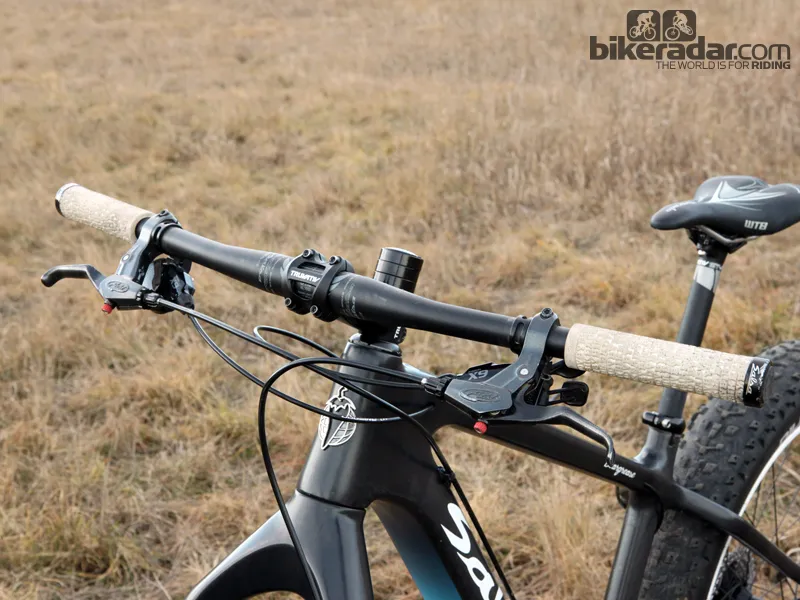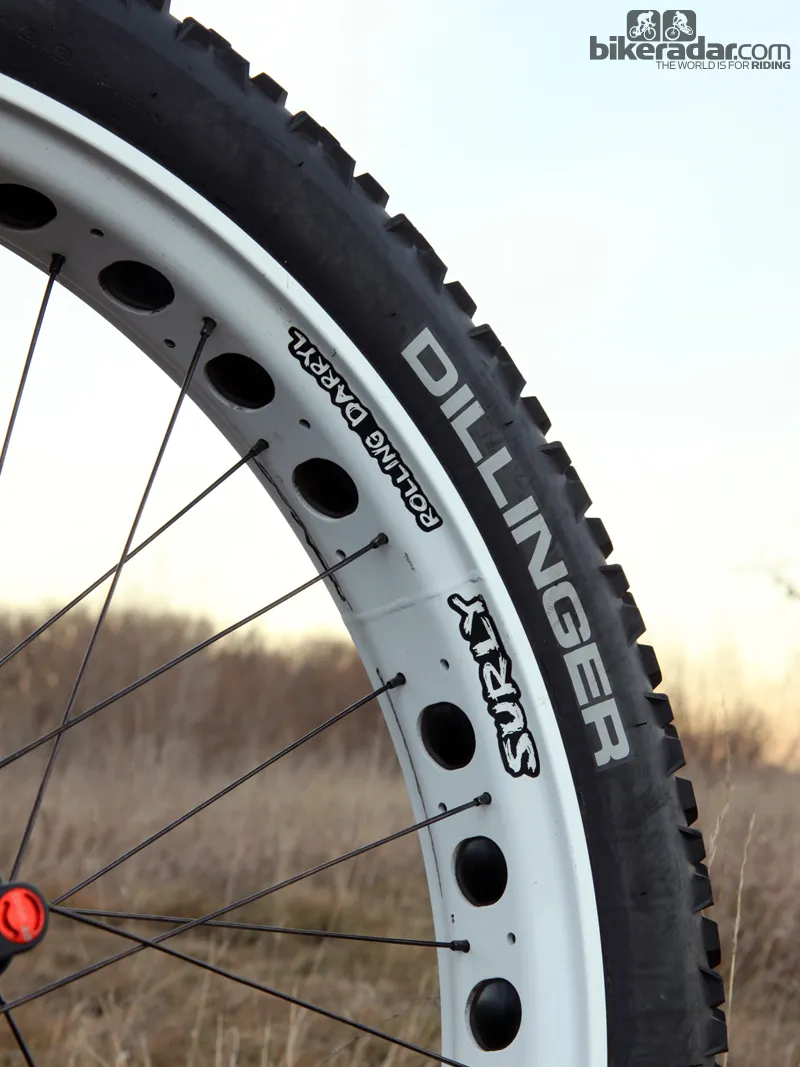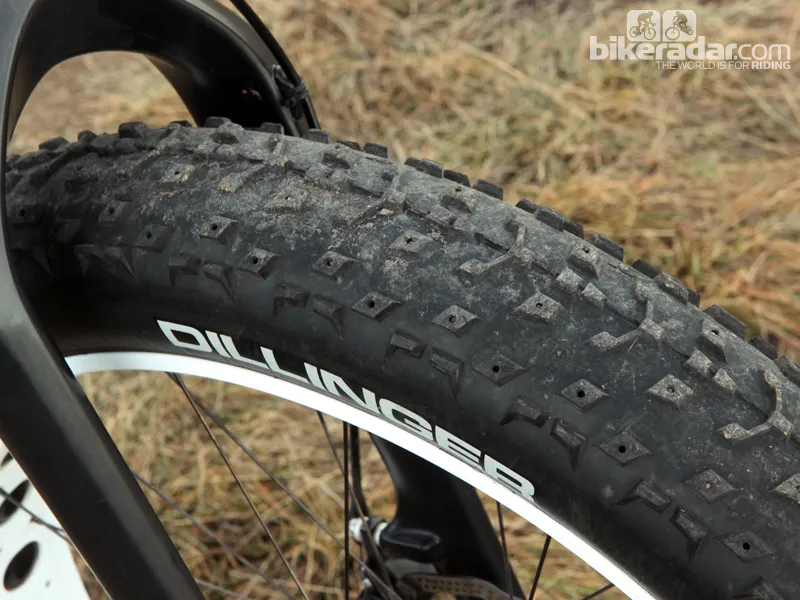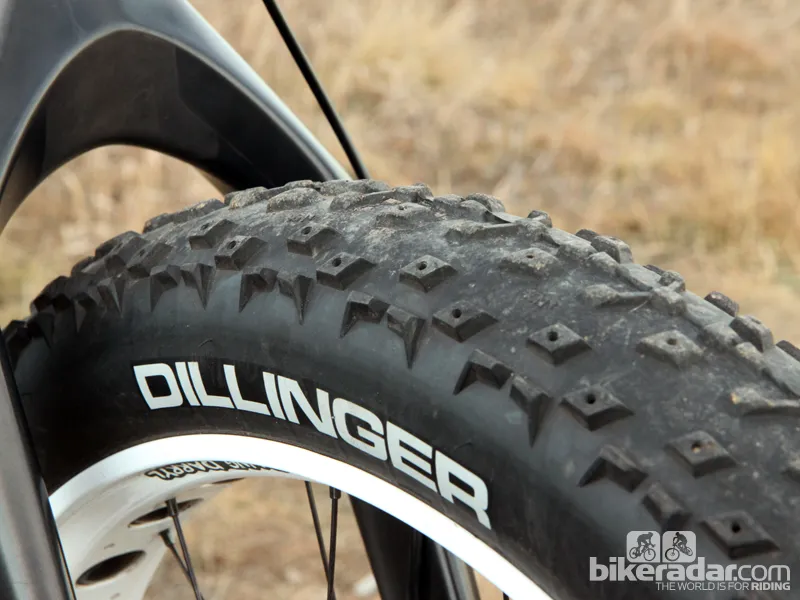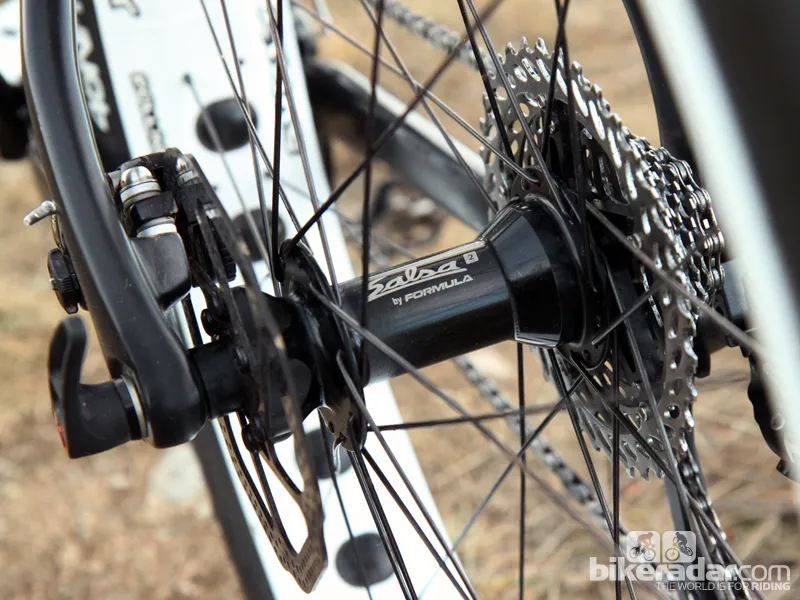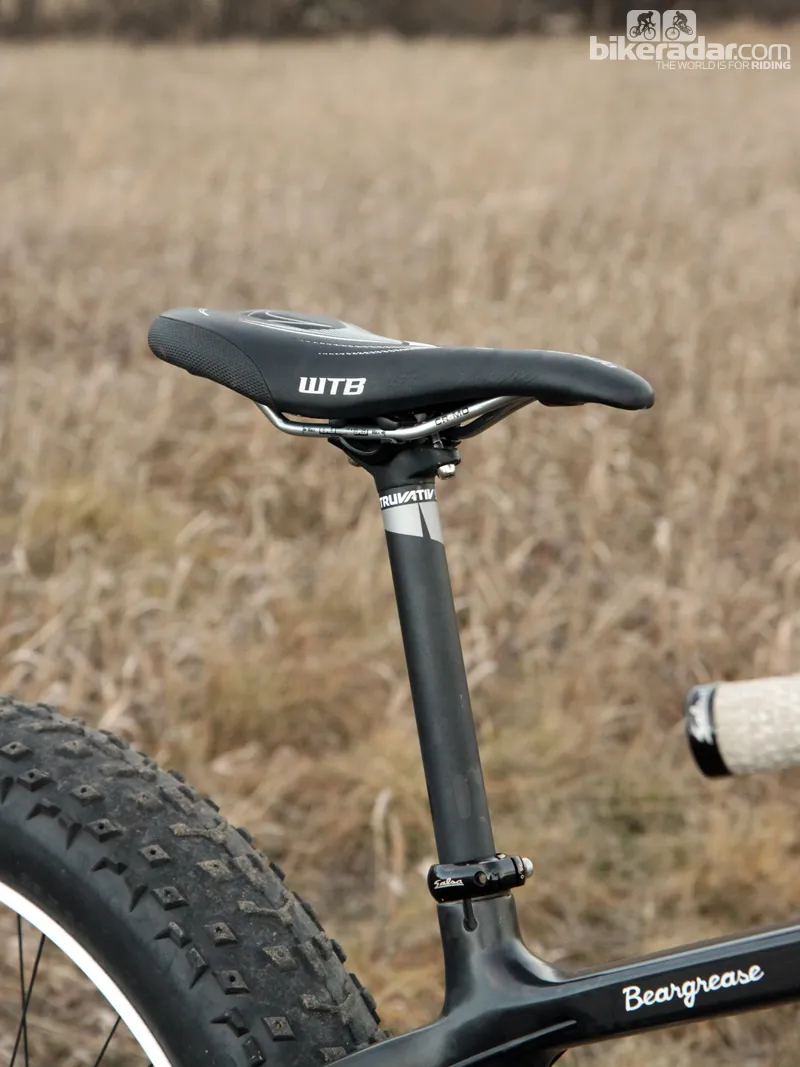Anyone doubting the staying power of fat bikes has only to look at the burgeoning crop of high-end options now hitting the market. Salsa, one of the elder statesmen of the category, tosses its hat into the ring with the new carbon fiber Beargrease. It's anything but cheap. But it's also enviably lightweight and it handles better than you'd expect.
- Highs: Lightweight chassis, precise handling, smart geometry
- Lows: Narrow bar, mediocre braking power, stiff ride
Ride and handling: Light on its big, fat feet
Fat bikes' huge tires (four inches across in this case) and the correspondingly enormous contact patches they create with the ground aren't typically all that eager to change direction. Salsa has given the Beargrease's Makwa Carbon fork slightly more rake than usual, though, making for a tangible improvement in handling and a reasonably light feel through the bars.
The Beargrease doesn't exactly mimic a standard trail bike – the bars are still a touch reluctant to move off-center and then there's a hint of floppiness past that – but it's certainly less of a struggle than usual, particularly at lower speeds. Mind you, much of this can easily be alleviated by swapping out the stock 700mm-wide bars for something with a little more leverage.
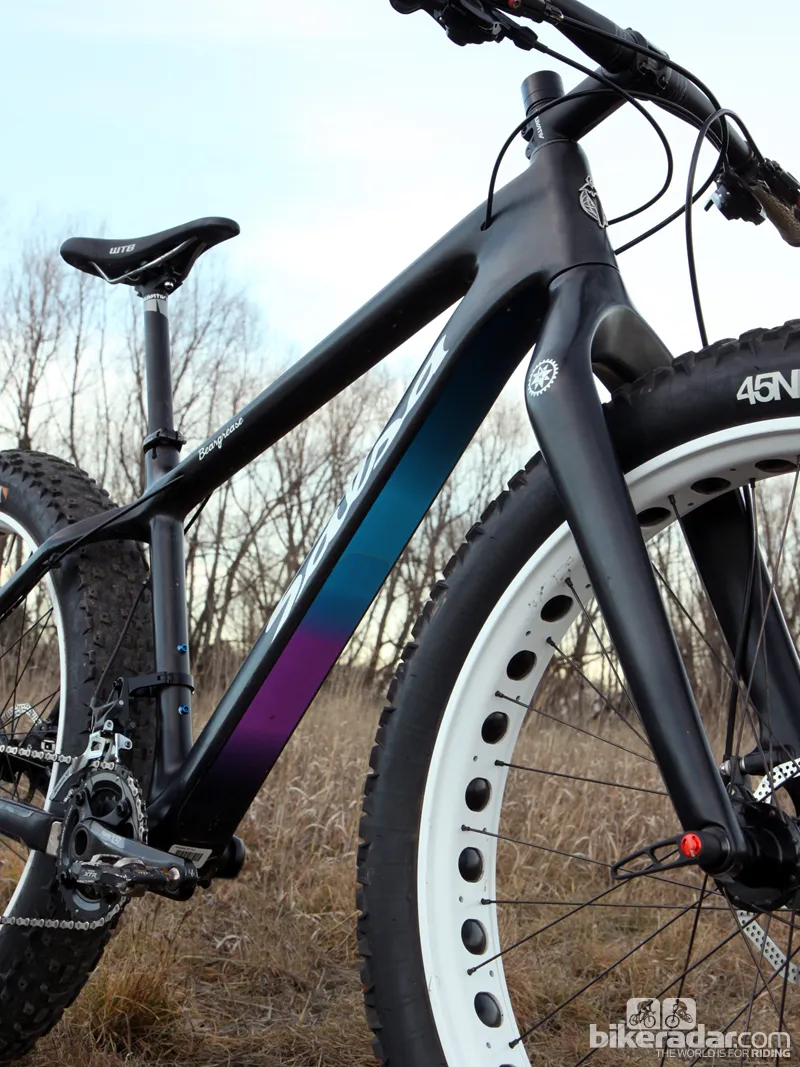
Even with our hands perched closer together than we're used to, the Beargrease feels impressively normal at medium-to-high speeds – and definitely flat-out fun. We found ourselves pushing things harder than expected either when there was heaps of snow and ice on the ground or when the trail was dry – uphill or down.
Speaking of which, there's simply no substitute for the Beargrease's massive paws when it comes to making your way across softer ground where more typical tires would auger in and bog down. Some of our test rides came shortly after fresh snowfalls that blanketed the region in soft, fluffy powder atop older and more heavily packed snow and ice. Others included more exploratory jaunts across expansive stretches of fine silt after Boulder's historic September flooding.
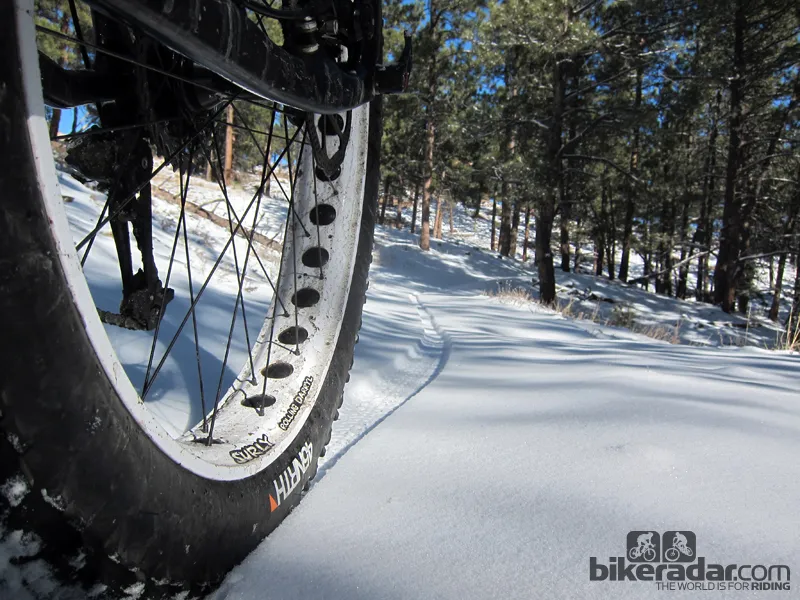
Despite such tricky conditions, the stock 45NRTH Dillinger tires found ample grip (running just 6psi certainly helped). It was often slow going but it was progress nonetheless – and more importantly, we were riding in conditions and on days when we otherwise might have otherwise stayed indoors.
But yes, it was slow going indeed. Even with ramped center knobs and 120tpi casings, we found the Dillingers to roll frustratingly slowly unless they were inflated upwards of 10psi or so, which then compromised their grip on the soft ground we so often sought while riding this thing. Needless to say, there's also no getting around the Beargrease's substantial rotating mass with 1,250g tires, 450g inner tubes, and 860g rims. All was well and good once we got the Beargrease moving but any requests to the engine room were best accompanied by a bit of patience.
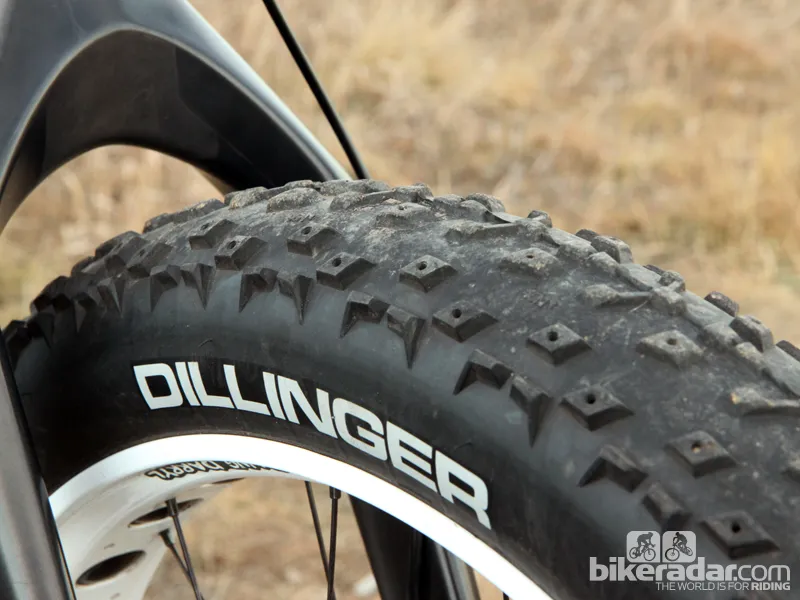
So the Beargrease might not be especially quick by general mountain bike standards but it's pretty fleet-footed when compared with its fat bike brethren. Total weight for our medium-sized tester was impressively light at 13.04kg (28.75lb, without pedals), especially considering the modest built kit.
More importantly, the carbon frame and fork are surprisingly stiff and very efficient at converting both pedaling and handlebar inputs into action. The huge tube cross sections, massive fork, and front and rear thru-axles give the Beargrease an admirably precise, point-and-shoot personality. There's little of the wandering that can sometimes afflict other fat bikes with less secure quick-release axles and while there's still a lot of wheel and tire to push around, at least there's the sense that your efforts are actually being productive instead of just being wasted in frame flex.
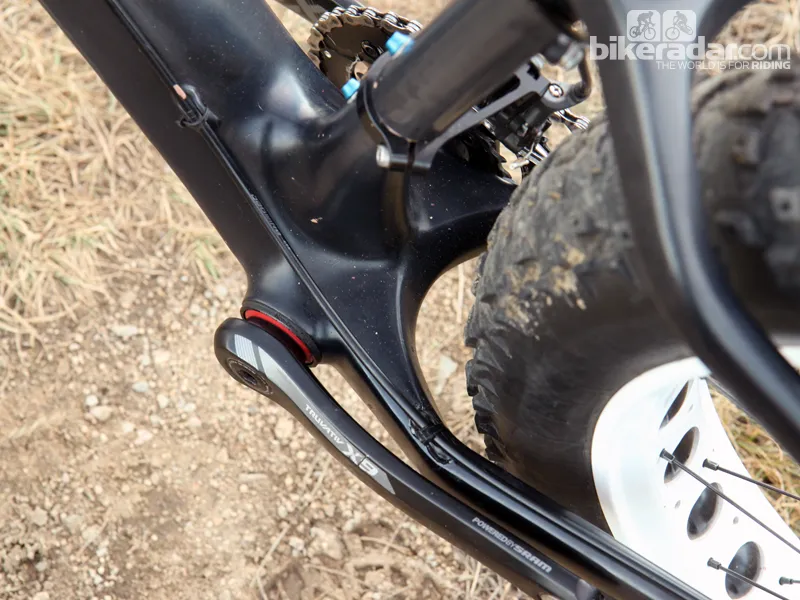
That stiffness unfortunately also applies to the bike's ride quality. While the massive tires offer gobs of air volume to soak up smaller bumps, whatever movement they provide is still largely undamped. Combine that trait with the very rigid composite frame and fork and even medium-sized impacts can create quite a jolt. The Makwa's longer axle-to-crown length means the Beargrease should readily accept the fat bike suspension forks that are slowly making their way to market. In the meantime, a flexier carbon fiber seatpost and bar rank high on our list of suggested upgrades.
Frame: Huge cross sections, gobs of clearance
They don't call 'em fat bikes for nothing and the Beargrease's carbon fiber frame certainly makes good use of the extra real estate made available by the extra-wide hub spacing and bottom bracket shell – nearly everywhere you look the word 'big' comes to mind.
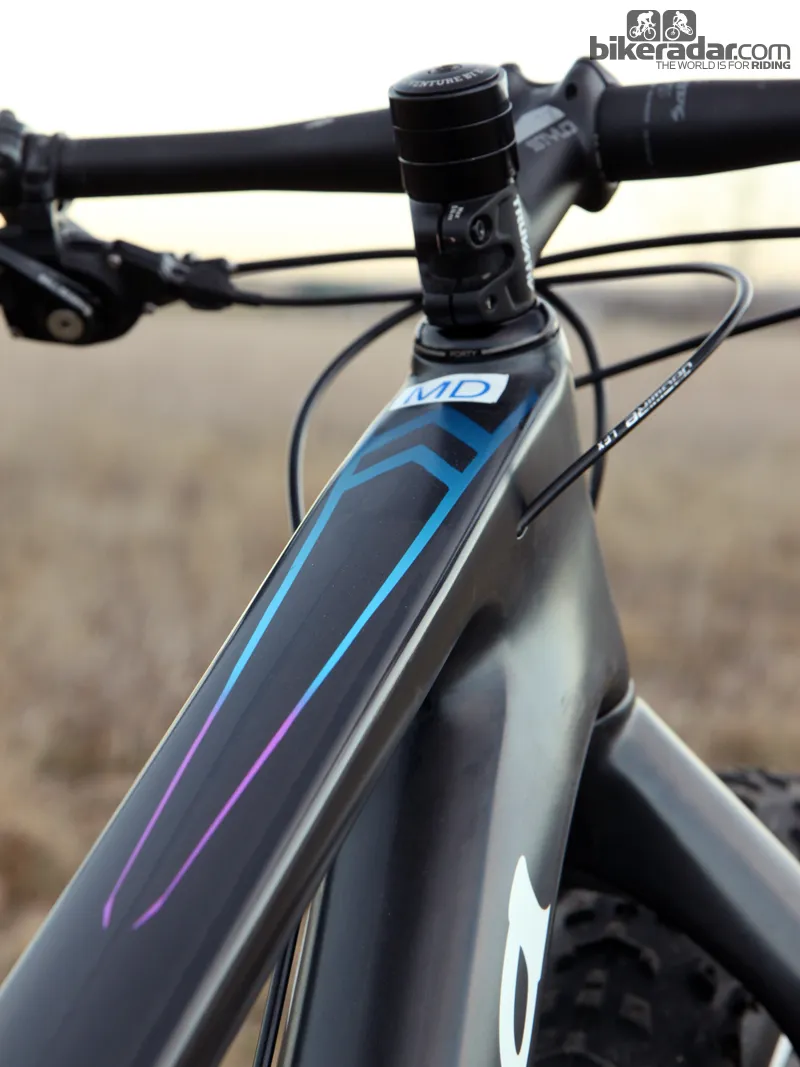
The down tube is positively enormous, running nearly the full width of the 121mm-wide press-fit bottom bracket shell and slimming down only minimally as it joins the bottom of the tapered head tube with its integrated drop-in cartridge bearing. The top tube is similarly girthy, with a wide and flattened profile up front that flows around and swallows the comparatively small, round-profile seat tube.
Out back, neither the seatstays nor chainstays are unusually large, but they're not exactly svelte, either. Chainstay spacing is particularly wide – as they need to be – and there's virtually no shelf behind the bottom bracket where snow and ice can accumulate.
Official tire clearance is up to 4in out back and 4.8in through the fork.
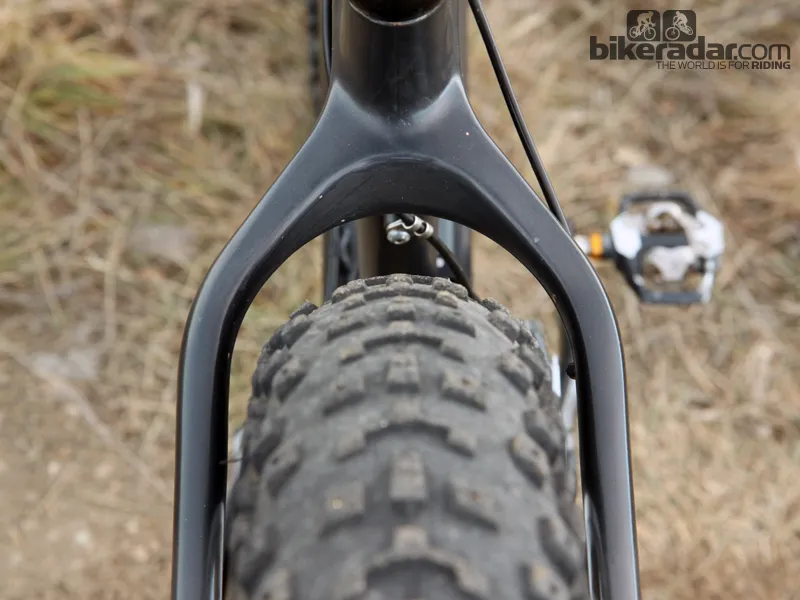
One look at the Makwa Carbon fork is all that's needed to explain the Beargrease's precise handling. No joke – the blades are almost as big around as the down tubes on some aluminum frames. Tying everything together are the aforementioned thru-axles: 177x12mm out back and 142x15mm upfront to work with relatively standard 170mm and 135mm-wide fat bike hubs.
Salsa has done a good job sweating the details, too. Although the full-length derailleur housings are routed internally just through the top tube, the paths are fully guided for easy-as-can-be maintenance. There's also a CNC-machined direct mount front derailleur clamp adapter that's removable should you decide a 1x drivetrain is more your style, a lightweight carbon fiber sleeve in the bottom bracket shell for the press-fit bearing cups, and bonded-in aluminum seats in the head tube for the integrated headset bearings. One slight hiccup is the rear disc brake, which is safely tucked away inside the rear triangle but whose bolts can be tough to access.
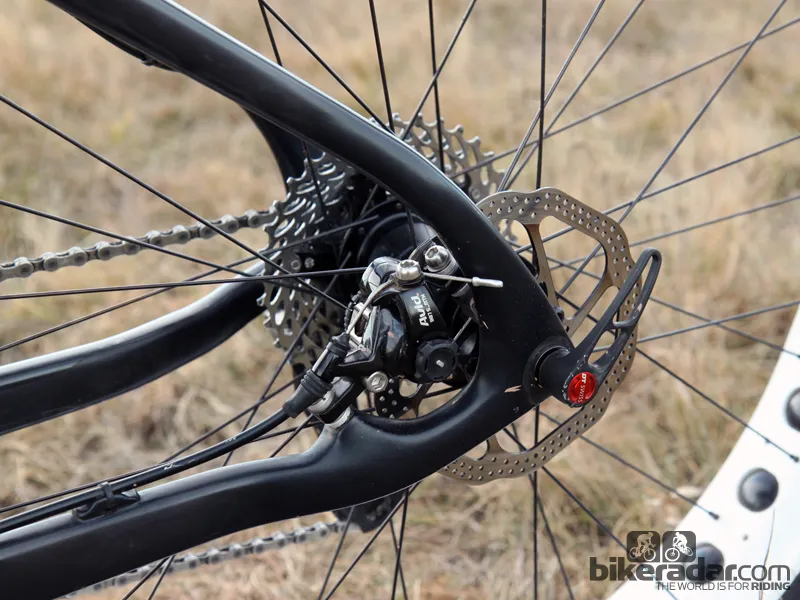
We're also guessing Salsa's claimed frame weights are for an unpainted frame. Though still fantastically light for the category – a Surly Moonlander is over a kilogram heavier, for example – our medium Beargrease frame is still about 200g heavier than claimed with an actual weight of 1,470g including the seatpost collar, rear derailleur hanger, and aluminum water bottle bolts. The matching Makwa Carbon fork adds 700g with a 200mm steerer (but without the compression plug).
Equipment: Durable but basic workhorse kit
Although the standalone Beargrease frameset is quite expensive at US$2,599/£1,599/AU$N/A (including the front and rear hubs, seatpost collar, and front derailleur adapter), Salsa has done a good job of holding the complete base-level model to a reasonably acceptable US$3,499/£2,799/AU$4,299 while still retaining good performance.
Component highlights include a SRAM X7/X9 drivetrain, Avid BB7 Mountain cable-actuated disc brakes, the previously mentioned Salsa hubs laced to drilled-out Surly Rolling Darryl single-wall aluminum rims and wrapped with 45NRTH Dillinger non-studded tires, and finishing kit from Salsa, Truvativ, and WTB. The total package ends up more than 2kg (4.41lb) heavier than the silly-light XX1-equipped flagship bike, but it gets the job done nonetheless.
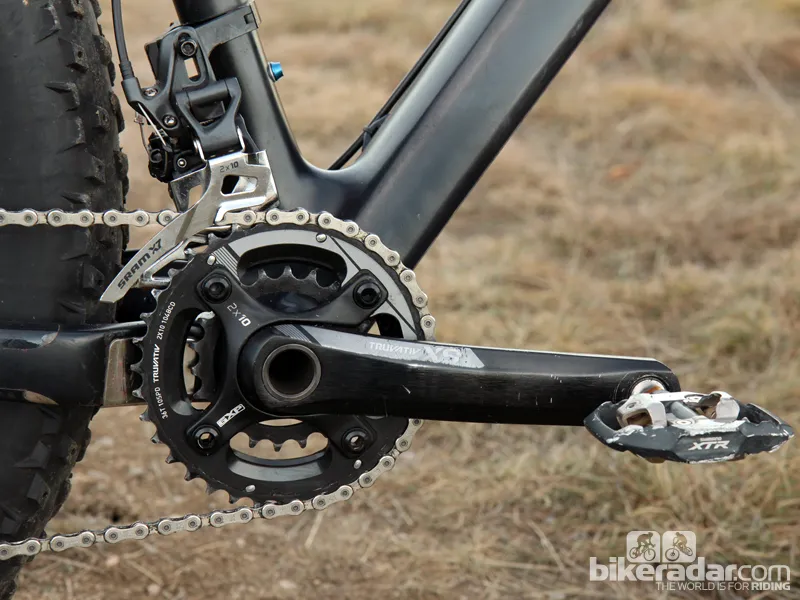
Shift quality on the X7/X9 drivetrain is relatively smooth and very reliable, as we had no problems rattling off gear changes even after everything was evenly coated in a nice patina of snow, ice, and magnesium chloride. Good on Salsa's product manager for specifying smaller-than-usual 22/36T chainrings, too. One particularly wet and nasty ride back home from the trailhead did leave us with a seized derailleur pulley the next morning but it was thankfully easy to resurrect.
The Avid BB7 Mountain cable-actuated disc brakes were robust and reliable throughout testing, plus they're very easy to set up and service. That said, their power simply can't match that of even an average hydraulic setup and the levers feel rather lifeless. We would strongly recommend swapping out the stock 160mm-diameter front rotor for a 180mm one and using compressionless housing all around.
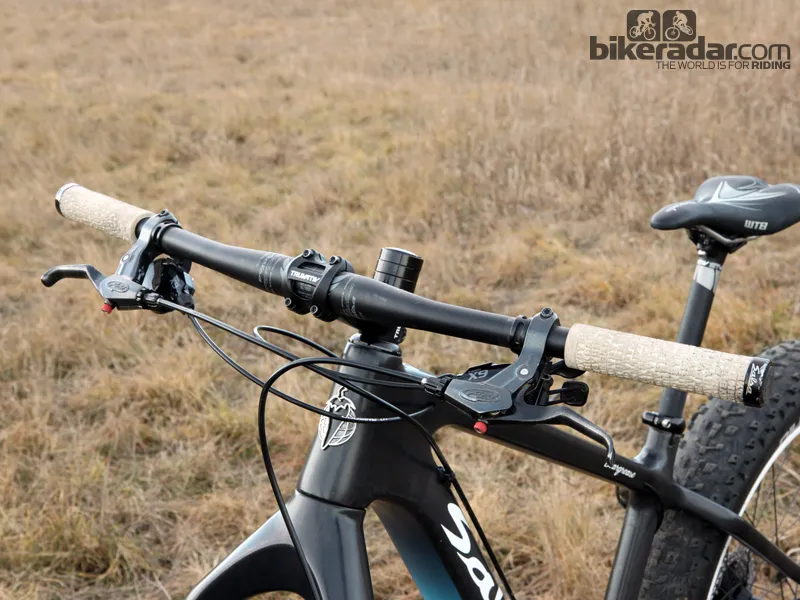
Likewise, the Truvativ Stylo T20 aluminum seatpost and Salsa Flat aluminum handlebar got their jobs done but we couldn't help but wish for a little more give in the surprisingly stiff 27.2mm-diameter post and a little more leverage than the Salsa's 700mm of width could provide.
Our wheels held up very well during testing. As they should, given the primarily softer terrain they were subjected to. That said, the rear hub could certainly use some faster-engaging freehub internals. Given the often smaller gears we were pushing on climbs, there's often quite a bit of crank rotation required before the pawls catch.
The verdict: All in all, our complaints are relatively minor, easily remedied and, more importantly, don't significantly detract from what is an otherwise fun and remarkably capable machine. Will a fat bike ever wholly replace your standard mountain bike? Not likely. But for well-heeled riders looking to extend their riding seasons well into the winter months, this is one of the sportiest options out there.
Complete bike specifications
- Frame: Salsa Beargrease
- Fork: Salsa Makwa Carbon
- Headset: Cane Creek 40 IS, 1 1/8-to-1 1/2in tapered
- Stem: Truvativ Stylo T20
- Handlebars: Salsa Flat, 700mm
- Grips: Salsa Backcountry Lock-On
- Front brake: Avid BB7 Mountain w/ 160mm Avid HS1 rotor
- Rear brake: Avid BB7 Mountain w/ 160mm Avid HS1 rotor
- Brake levers: Avid Speed Dial 7
- Rear derailleur: SRAM X9
- Shift levers: SRAM X9 trigger
- Cassette: SRAM PG-1050, 11-36T
- Chain: KMC X10
- Crankset: SRAM X9 Fatbike, 22/36T
- Bottom bracket: SRAM PressFit GXP
- Pedals: n/a
- Rims: Surly Rolling Darryl
- Front hub: Salsa Fat Conversion Hub, 15 x 142mm, 32h
- Rear hub: Salsa Fat Conversion Hub, 12 x 177mm, 32h
- Front tire: 45NRTH Dillinger, 26x2.4in
- Rear tire: 45NRTH Dillinger, 26x2.4in
- Saddle: WTB Silverado
- Seatpost: Truvativ Stylo T20
